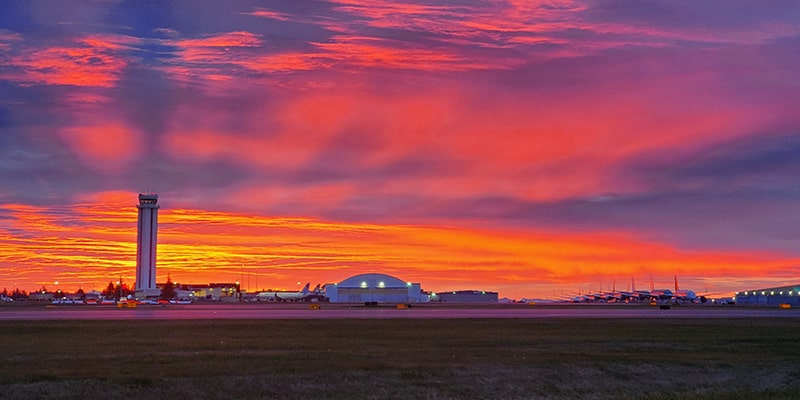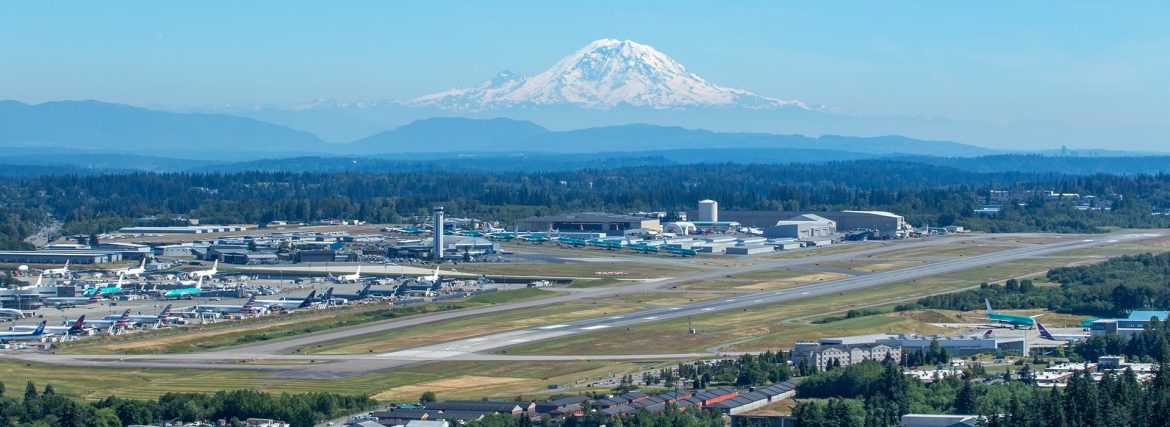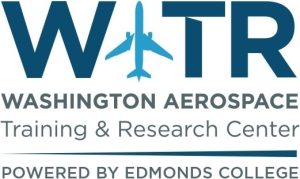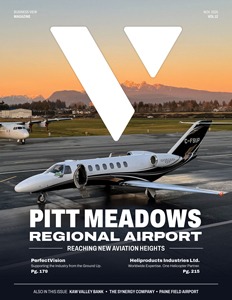Innovation and Aviation in Motion
A Thriving Aviation Hub with a Lot on the Navigational Agenda
In the heart of Snohomish County, Washington, just north of Seattle, sits Paine Field Airport. Serving around 550 general aviation aircraft, this thriving aviation hub is one of the region’s main economic drivers, supporting tens of thousands of jobs both on and off the airfield. “We have two runways; we call them the big runway and the small runway.” describes Director Joshua Marcy. “The smaller runway is obviously for the smaller piston engine aircraft. The big runway handles everything, Boeing, commercial service, GA, all of the above.”
Commercial service began in 2019, offering travelers a more relaxed alternative to SEA. “Pre-COVID, we were at about a million passengers,” Marcy relays. “We’re about 65 percent of where we were before COVID, we’re seeing a slower recovery, on the commercial service side, which is happening nationwide. Major hubs have rebounded more rapidly.” Three airlines, Horizon, Alaska, and Frontier, currently operate from Paine Field, serving destinations from Denver westward.
Along with passenger service, the airport supports a wide range of aviation activity. “We have MROs, (maintenance, repair, and overhaul),” Marcy explains. “ATS, (Aviation Technical Services) is the third largest employer in Snohomish County and they have about 1,600 employees inside their building.” The company specializes in servicing large group-three aircraft such as the Boeing 737.
One of the region’s biggest economic impacts is Boeing, whose dual-isle aircraft has historically been manufactured at Paine Field. Marcy expands, “The 787 has moved to South Carolina, so the current fleet mix of what Boeing is designing and building here is the 777s, the new 777Xs that are coming out with the folding wingtips, and the 767s, including the refuelers for the military.” A new line for the 737 is also under development at the site. “The goal is, when Renton, where the 737s are made, hits capacity, PAE will be the relief valve,” he says.
“We are currently in that process of starting to see some 737 activity here, and hopefully we’ll see some deliveries in the near future.”
One of the Nation’s Top General Aviation Airports
While Boeing and commercial flights are a mainstay, general aviation remains the backbone of Paine Field’s day-to-day activity. “We do about 140,000 operations a year, and 80 percent of that is GA, if not more,” Marcy reports. “We are the fourth largest general aviation airport this side of the Mississippi and 12th in the country in terms of how many general aviation aircraft are based here.” He says that private owners, and the two flight schools, Regal Air and Rainier Flight Service, account for much of the activity. “We have several of those on the field, and they practice all the time. The majority of all of our takeoffs and landings are probably students learning how to fly.” Paine Field’s Fixed-Base Operator, Propeller Aero Services, provides fuel, hangar, and ground services to these operators and transient aircraft. The mix also includes medevac helicopters, on-demand charter flights, and privately owned planes.

Despite the volume, Marcy says the airport is not currently pursuing new hangar construction. “We have more than enough hangars,” he details. “We’ve got almost 600 aircraft here. I’m not looking to add capacity; I want to maintain and support the base of customers that we have. It’s important for us to balance different lines of commercial service, general aviation, aerospace manufacturing, and our real estate portfolio, because there are ebbs and flows in aviation.”
That diversified model is what kept Paine Field financially stable during the pandemic. “For COVID, it was commercial service that took a hit, but the airport was able to remain in the black because we have that diverse portfolio,” he recounts. “My goal is really to continue to maintain that presence as we go forward.”
Economic Engine of Snohomish County
When it comes to economic impact, the numbers speak for themselves. “Because of Boeing and all the partners that Boeing has, they have about a $60 billion economic impact to the region,” Marcy discloses, noting that that activity supports roughly 160,000 direct and indirect jobs. “We have a lot of real estate around the airport that gets filled with suppliers for Boeing, whether it’s electronics or people that make seats, all the different things that go into making an airplane,” he continues. “The companies want to be right next door to the manufacturer, it is cheaper.”

Paine Field is currently working out how to accommodate future growth and the impacts. “We know that growth is coming,” Marcy acknowledges. “Our Master plan indicates growth into the future with our FAA approved forecasts. So, the airport is studying how to best plan for future development and what factors need to be considered to have sustainable, efficient growth for our community.”
Industrial development, improved roadways, and long-term planning are all under consideration. “We don’t think that major growth is necessarily coming for maybe another five years, but when it comes, we want to be ready,” he remarks. “When I say growth, I mean the overflow from SEA passengers that are going to come our direction.”
Marcy emphasizes that Paine Field’s growth philosophy is about collaboration rather than competition. “We have a great partnership with SEA and the Port of Seattle,” he highlights. “We’re not trying to grow because we want to grow. Growth is good, and it brings about jobs and better living conditions for people, better education, better future. But as an airport, we’re really just trying to respond to the demand. The region has a demand headed our way, and we want to be prepared for that.”
Major Infrastructure and Future Projects
The airport’s infrastructure program is keeping up with current needs and planning for anticipated demand. Among recent highlights is the completion of the East General Aviation Apron, which is expected to extend its lifespan for decades. “That allows us to be able to park general aviation aircraft there, transient aircraft that are flying through can park and tie down their aircraft over there, take a crew car, go get something to eat, go out in the community, spend some money, come back to the airport and be on their way,” Marcy elaborates.
“That project is complete, and it looks really good. It’s kind of on one of our frontage roads at the airport, and for a long time, there was a reason why it needed to be redone, and it was very apparent. I’m glad to see that eyesore gone.”

Another major effort is the Taxi Lane Echo reconstruction, designed to accommodate Boeing’s large aircraft. “We are redoing the center of a taxiway to group five standards and concrete,” Marcy depicts. “Boeing moves a lot of big airplanes around our facility, and the concrete or the asphalt that they move those aircraft on has to be rated to take the weight or they’ll crumble. It gives us more square footage to be able to utilize more surface when those line moves happen.”
“It gives us the ability to have the infrastructure there, say 20 years from now, when there might be even more of a need for that infrastructure. Doing it now ensures the future Airport Department leadership doesn’t have to do it later,” he adds.
In addition, a runway rehabilitation project is slated for next summer. “It’s the north end of our runway, the north third,” he shares. We are going to do some milling and overlay and some drainage updates. The north end of the runway is really what gets utilized the most, because we are in what we call South flow. We have winds from the south blowing north, and aircraft land into the wind.”
The plan is to wait until after the FIFA World Cup activity concludes before beginning construction. “We’re going to make sure we are open and operating for anything that comes during FIFA,” Marcy assures. “And the first day FIFA is over in Seattle, we are going to start our project.”
A Lifelong Passion for Aviation
For Marcy, leading Paine Field is much more than a job, it is a calling. “I just love aviation,” he states. “My first job, I was a janitor in an aviation maintenance hangar, and I was 15. Then in high school, I worked at a naval base that was getting decommissioned into a municipal airport, fueling airplanes and things like that.” From there, Marcy built a career spanning operations roles in Austin and at SEA before coming to Paine Field. “I’ve done the whole thing, walked around, picked up trash on the field, done security and airport operations, worked at SEA as airport duty manager, and ran their terminal operation,” he recalls. As for what motivates him, he says, “I just want to be around airplanes. As long as I get to come to work and see airplanes, that’s all I care about.”
From Boeing’s innovations to the student pilot’s first solo flight, Paine Field truly is a thriving airport, built on history, progress, and a love of flying.
AT A GLANCE
Who: Paine Field Airport
What: A public use, general aviation, and commercial service airport
Where: Snohomish County Washington
Website: www.painefield.com
PREFERRED VENDORS/PARTNERS
Washington Aerospace Training &
Research (WATR) Center.: www.watrcenter.edmonds.edu
Based at Paine Field Airport, the Washington Aerospace Training & Research Center, a division of Edmonds College, delivers innovative, short-term programs for current and future manufacturing workers. They offer training that meets the fast-paced demands of the industry while ensuring students acquire the skills necessary to excel in today’s workforce.


